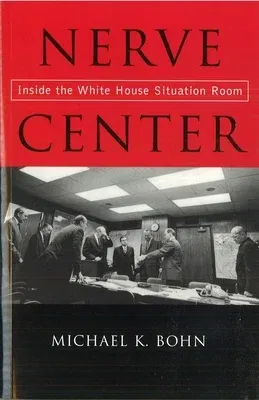The White House Situation Room is arguably the most important facility
in the most important building in the world. As the president's
intelligence and alert center, it provides vital communication and
crisis management capabilities to the chief executive and his advisers.
It can also be "an island of calm," as a top adviser for Vice President
Al Gore once described it. So little is known about the Situation Room
that, until the publication of Nerve Center, the American public's
knowledge of it is almost entirely based on its portrayal by the
entertainment industry. Yet, as Michael K. Bohn points out, Hollywood
has failed to capture the real drama of the Situation Room. Numerous
crises come alive in Nerve Center, from the Vietnam War (when
President Johnson made late night visits to the Situation Room wearing
his pajamas and went so often that he moved his Oval Office chair
there), to the attempted assassination of President Ronald Reagan, to
today's high-tech war on terrorism. Created in the aftermath of the Bay
of Pigs fiasco by advisers to President John Kennedy, presidents,
cabinet members, and National Security Council staff members have all
come to depend on the Situation Room. "I knew that I could always rely
on the Situation Room," President Jimmy Carter recalled, "and it never
let me down." Bohn, who served as director of the Situation Room for the
first President George Bush, has recruited numerous officials, including
former and current staff, to tell the colorful forty-year history of the
Situation Room. In a final chapter, Bohn uses a fictional crisis to
describe how the Situation Room will evolve to help the president meet
the challenges of an increasingly dangerous future.

